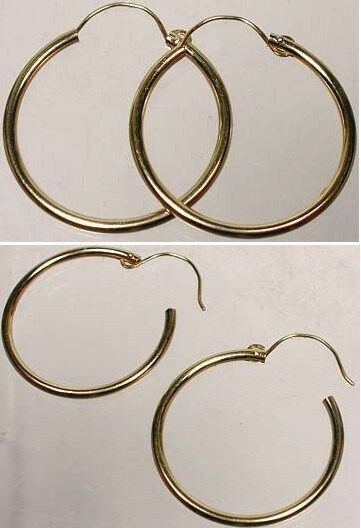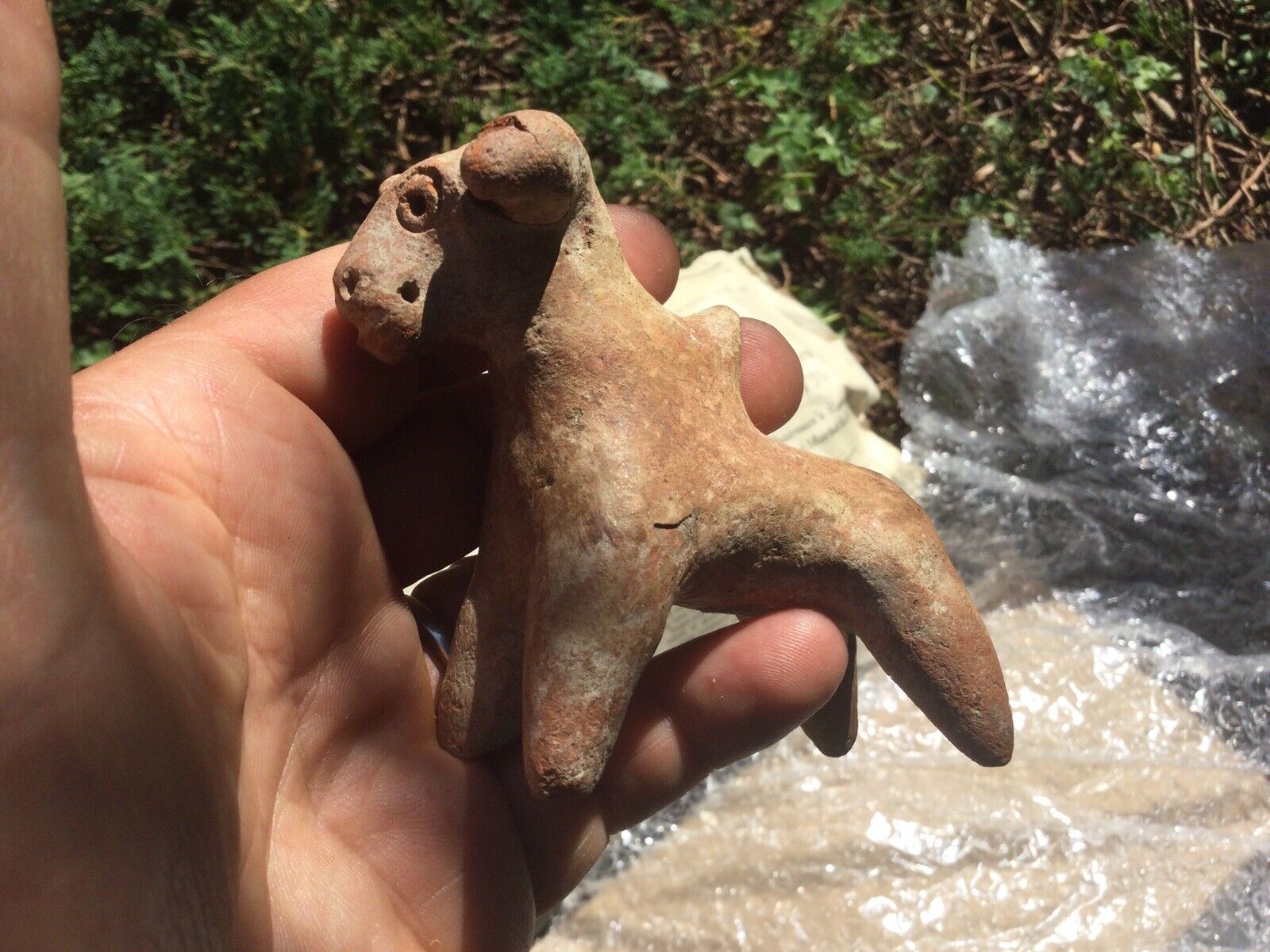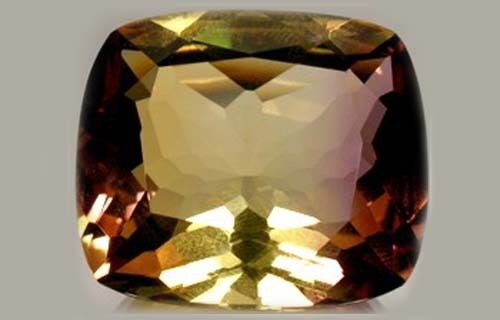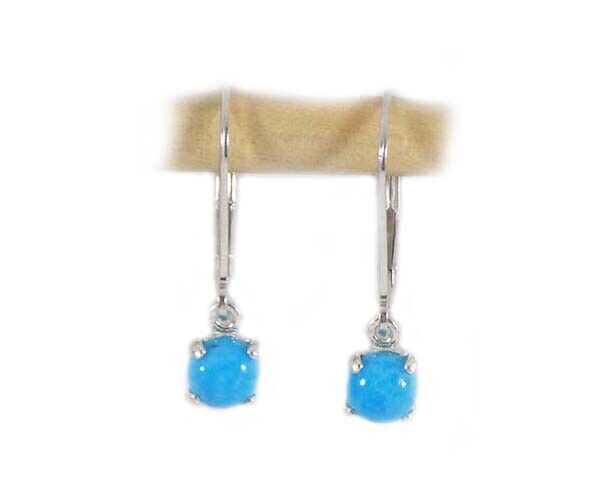-40%
19thC Antique ¼ct+ Russian Sapphire Ancient Christian Talisman King Solomon Gem
$ 52.79
- Description
- Size Guide
Description
Antique Handcrafted Genuine Natural Russian Quarter Carat (Plus) Canary Yellow Sapphire Faceted Round.CLASSIFICATION:
Faceted Canary Yellow Sapphire Round.
ORIGIN:
The Ural Mountains, Russia. 19th Century.
SIZE
: Diameter: 4mm. Depth: 2mm. All measurements approximate
WEIGHT
: Approximately 0.28 carats.
NOTES
: Upon request we can set your gemstones as a ring, pendant, or as earrings (click
here
for more information).
DETAIL:
Ancient Hebrew legends state that the tablets upon which the Ten Commandments were written, were actually sapphire, and biblical accounts record that King Solomon wore a sapphire ring. Monarchs of the ancient world oftentimes wore sapphires around their necks as a powerful defense from harm. They preserved the wearer from envy and attracted divine favor. Ancient Hebrew sorcerers and mystics valued the sapphire above all other gemstones, believing that sapphire enabled them to interpret oracles and foretell the future. Many linguists and scholars believe that the name sapphire is derived from its association with the planet Saturn (the name can be roughly translated to mean “dear to the planet Saturn” in many different languages). In ancient Rome Saturn was a major god presiding over agriculture and the harvest time. His reign was depicted as a Golden Age of abundance and peace.
Celebrating that cultural legacy here's a gorgeous, vibrantly colored natural canary yellow sapphire precious gemstone from the Ural Mountains of Russia. The gemstone was hand crafted and faceted by a 19th century Russian artisan, part of an heritage renown for the production of the elaborate gemstones and jewelry of the Czars of Medieval, Renaissance, and Victorian Russia. The faceted cut is a coarse precursor to what eventually became known in the industry as a “brilliant cut” round, the contemporary finish generally given to round diamonds. The results is an exquisite and incredibly beautifully colored precious gemstone with lots of depth, fire and sparkle. Cut and faceted just like a diamond, it looks just like a canary yellow diamond. This is a real sparkler, and this color sapphire is definitely much in demand.
The color is very beautiful, a bright canary yellow with brilliant, intense flashes of sunshine. The gemstone is to the eye, seemingly without blemish. Even in the accompanying photo enlargements here it is not easy to discern the minute blemishes assuredly found within the gemstone. Close scrutiny of these photo enlargements, or of the gemstone directly with a jeweler's loupe, will reveal a few minute blemishes composed of colorless crystalline material, quite characteristic of natural sapphire. This is nonetheless an exceptional precious gemstone, completely transparent, with every bit as much sparkle and brilliance as a diamond, it is truly a very flashy gemstone, the color and quality both fabulous! High quality yellow sapphires such as this are increasingly difficult to acquire at anything approaching a reasonable price. Unfortunately most seemingly flawless, transparent “sapphires” sold even by the largest and most reputable retailers in the United States are synthetic (read the fine print; and the same is true of emeralds and rubies).
However the Southern Ural Mountains of Russia have been producing good quality, natural sapphires for centuries. As might be expected under magnification the gemstone shows the unmistakable, hallmark characteristics of having been hand crafted. The coarseness of the antique, handcrafted finish is considered desirable to most gemstone aficionados, and is not considered a detriment, or detract from the value of a gemstone. These characteristics are not only expected of hand-finished gemstones, many believe that such antique hand-crafted gemstones possess much greater character and appeal than today's mass-produced, laser-cut gemstones. Unlike today’s computer controlled machine produced gemstones that approach flawlessness in a perfect finish, the cut and finish of an antique, handcrafted gemstone such as this is the legacy of an artisan who lived two centuries ago.
Handcrafted though it may be the gemstone has great luster and sparkle, and to the eye is completely transparent, but it is not absolutely flawless. True, the blemishes it possesses are virtually invisible to the naked eye, and t use trade jargon the gemstone can be characterized, as "eye clean". To the view of the casual admirer the gemstone is seemingly without blemish. However magnified as it is here in the accompanying photo enlargements, you might be able to detect a few slight blemishes within the stone. Of course much the same may said about almost any natural gemstone (and in particular with regard to natural alexandrite). An absolutely flawless gemstone simply is not the rule in nature. Most absolutely flawless gemstones will upon close examination be revealed to be synthetic, as perfect gemstones are the realm of laboratory-produced gemstones, not Mother Nature. You might also notice under magnification occasional irregularities in the cut and finish.
Of course, these characteristics are not only expected of hand-finished gemstones, you must also consider that two centuries ago the mining techniques even possible then, let alone in practice, did not allow the ultra deep mining operations which are so commonplace today. Keep in mind two centuries ago mankind was more or less limited to surface deposits or near surface deposits of gemstones. Higher quality gemstones which today are routinely mined from beneath hundreds of meters, even kilometers beneath the earth's surface, were simply inaccessible then. It is precisely for these reasons antique gemstones must be appreciated as antiques first, gemstones second. The relatively superlative quality of contemporary gemstones routinely mined from deep beneath the earth's surface today were simply not accessible two centuries ago, or at least, only rarely so. However for most, the unique nature and character of these antique gemstones more than makes up for the blemishes found within the gemstones, as well as the cutting irregularities common to handcrafted gemstones, all of which are by and large (if at all) are only visible under magnification.
SAPPHIRE HISTORY:
Sapphires have been since ancient times one of the most highly valued of all gemstones, and references to the gemstone date back to about 800 B.C. In the ancient Mediterranean world (including the Greeks, Romans, Persians, Hebrews, and the various Indo-European Celtic tribes), priests and sorcerers honored the sapphire above all other gems. They believed that the sapphire enabled them to interpret oracles and foretell the future. Sapphire is also the original “true blue”, the gem of fidelity and of the soul. In the ancient world, a gift of a sapphire was a pledge of trust, honesty, purity, and loyalty.
The oldest sapphire jewelry unearthed by archaeologists has been of Etruscan origin, about sixth century B.C. The Greeks and Romans are known to have worn sapphires from Ceylon, as described by writers from those times. Though some argue that the name sapphire is derived from its association with the planet and ancient deity Saturn (the name can be roughly be translated to mean “dear to the planet Saturn” in many different languages), most linguists and scholars agree that the name "sapphire" comes from the Latin "sapphirus" and the Greek "sappheiros", which translates to "blue" in both languages. The name sapphire is also a derivative of the ancient Hebrew and Persian word for "blue" as well.
To the ancient Romans however, the word "sapphirus" actually referred to lapis lazuli, another blue gemstone. According to Pliny, the first century Roman naturalist, what the Romans called blue sapphire (“cyanus”, from the Greek “cyan”, or “blue”) translates to "hyacinth"; the green sapphire was "emerald", and the purple sapphire was "amethyst". However the “Saturn” origin theory is appealing in that in ancient Rome Saturn (“Kronos” to the ancient Greeks) was a major god presiding over agriculture and the harvest time. His reign was depicted as a Golden Age of abundance and peace by many Roman authors, a mythical age when Saturn was said to have ruled.
In remembrance and celebration of that age, a great (week-long) feast called Saturnalia was held throughout the Roman Empire during the winter months around the time of the winter solstice. During Saturnalia, roles of master and slave were reversed, moral restrictions loosened, and the rules of etiquette ignored. It is thought that the festivals of Saturnalia and Lupercalia were the roots of the carnival ("Mardi Gras" in the USA). Roman depictions of Saturn generally showed the god with a sickle in his left hand and a bundle of wheat in his right. In the medieval world Saturn was known as the Roman god of agriculture, justice and strength.
The ancient Persians believed that the Earth was imbedded into a gigantic blue Sapphire stone, and the sky reflected its beautiful color. They referred to the sapphire as "the gem of the heavens”. In ancient Persia, ground sapphire was used as an all purpose medicine. One ancient recipe to enhance eyesight was to powder the stone and mix it with vinegar. The same recipe was used to treat nosebleeds. Sapphires were also used to treat fevers and rheumatism. When treating boils and external ulcers, they were ground and mixed with milk. The paste was then applied to the afflicted area. Ancient Hebrew legends state that the tablets upon which the Ten Commandments were written were of blue sapphire, and biblical accounts record that King Solomon wore a great sapphire ring. Monarchs of the ancient world wore sapphires around their necks as a powerful talisman protecting them from harm and attracting divine favor.
Archaeological finds tell us that Ceylon is more than likely to be the source for sapphire in the classical world. In ancient Ceylon it was believed that star sapphire (a semi-opalescent gemstone extremely popular Victorian-era jewelry) served as a protective amulet and a guard against witchcraft. Celanese sapphire would have reached the classical Mediterranean cultures via the ancient trading routes that crossed present day Turkey, Iran, Afghanistan and Pakistan to India. Distribution within Europe was achieved using the extensive Roman road network which extended to all the corners of the Roman Empire. It is also possible that some of the sapphire traded in the classical Mediterranean originated in India.
As the centuries passed European royalty came to favor sapphire believing the stone would provide protection from harm. Throughout Medieval Europe, the sapphire was thought to give the wearer strengthened vision, including visions of the future. In particular during the 11th and 12th centuries, sorcerers honored the sapphire more than any other stone as it enabled them to hear and understand the most obscure oracles. Not only did sapphire help to get in touch with astral and psychic realms, but the stone also provided protection for those who took those journeys. Sapphire was regarded as an antidote to black magic and effects of evil spirits, and provided protection against sorcery. It was believed to banish evil spirits and send negative spells back to the sender.
Sapphires were also used as a talisman by medieval travelers, who believed that a sapphire would protect the wearer from poisonous creatures, kill snakes hiding nearby, and provide advance warning against hidden dangers. It was believed that if a sapphire were engraved with the figure of a man or a ram, that sapphire amulet would cure all illness and elevate the owner to a high position. Sapphire was also held to be a symbol of truth and constancy, and in the 12th century, the Bishop of Rennes and Pope Innocent III (who launched the infamous Fourth Crusade which sacked Constantinople) praised the blue of the sapphire as representing heaven, and initiated its use in ecclesiastical rings and other ecclesiastical jewelry as symbolic of the Pontific title and the Seal of Mysteries.
One of the most ancient and well-known sapphires belonged to the England’s Edward the Confessor. According to legend the king met a poor man begging alms. He did not have cash so he gave away his sapphire ring. Many years later, some pilgrims from Jerusalem came to him and gave him back his ring, saying that soon the King would meet the favored beggar in Heaven. It turned out to be true; Edward died soon after that meeting, and his sapphire was buried with him in his grave. Two centuries later his grave was opened, the sapphire recovered, and to everybody's astonishment, the King's body was still intact. After that, the miraculous sapphire was given a cross-shape cut and was placed in the Westminster Abbey where the miracles continued; the stone was known to cure the blind as well as paralytics and epileptics. The “Sapphire of St. Edward” now resides in the Crown of the British Empire next to another famous sapphire, the one of Charles II.
Another unique sapphire can be found among the state insignia of Russia. A 200-carat stone from the Ceylon is set in the top of the orb, which is now kept in the Kremlin Treasury. The Muslim world also has its own sacred sapphire, the “Eye of Allah,” a gemstone that once belonged to the famous 18th century Persian conqueror Nader Shah. Medieval European populations believed wearing a sapphire suppressed negative thoughts, and possessed curative powers over natural ailments. Sapphires were used as medicine for treatment of eye diseases and as an antidote for poison. When touched against the eye, it was believed to remove impurities and restored sight.
Ivan the Terrible
, the (sixteenth century) first Tsar of all Russia and conqueror of Siberia, attributed to sapphire strength of the heart and muscles, endowing the wearer with courage. Sapphires are a member of the corundum family, and close relative to the ruby. In fact, a ruby is simply a red sapphire. The sapphire is considered one of the most valuable of precious stones. The most highly prized were the "cornflower blue" sapphires known as "Kashmir" sapphires, from Northern India. Unfortunately the deposits were exhausted in the late 1800’s. The principal contemporary sources of sapphire are Russia, Siam, Ceylon, Burma, Africa, and Australia. The Museum of Natural History in New York is home to the one of the most notorious sapphires in the world, the “Star of India,” a star sapphire of 563 carats.
Throughout the history of the ancient world, gemstones were believed capable of curing illness and providing protection. Found in Egypt dated 1500 B. C., the "Papyrus Ebers" offered one of most complete therapeutic manuscripts containing prescriptions using gemstones and minerals. Gemstones were not only valued for their medicinal and protective properties, but also for educational and spiritual enhancement. In these as well as other ancient cultures, it was believed that sapphires would aid in ridding oneself of unwanted thoughts, and that they would bring joy and peace of mind, opening the mind to beauty and intuition.
Medicinally sapphire was believed to promote general health, and was oftentimes ground up and consumed. Sapphire was believed to be effective in reducing fevers, protected against mental illness, and to sharpen eyesight. They were also believed to cure ulcers. Psychologically sapphire was believed to aid the maintenance of inner peace, a healthy mental state, to calm nerves, and to promote mental clarity, helping with focus and concentration. As such they were widely used as a remedy for mental and nervous disorders.
On the metaphysical side, sapphires were regarded as a stone of prosperity, sustaining the gifts of life, fulfilling the dreams and desires of the wearer, and eliminating frustration. The sapphire has historically been identified with chastity, piety, and repentance, and was believed to foster wisdom and truth, and to increase perception and the understanding of justice. It was believed conducive to finding peace of mind and serenity, and to promote a life of sincerity, helping preserve one’s innocence while learning life’s truths. Sapphires were also associated with romantic love, representing fidelity, romantic devotion, truth, compatibility, commitment, and mutual understanding.
Sapphire was also worn as a talisman with the belief that it would increase one’s faith, hope, and joy, and would keep thoughts pure and heavenly. Sapphires were also used as talismans for protection, to ward off diseases, and to bring peace, happiness, and intelligence. Sapphire was known as the stone of serenity, helping one to meditate by providing mental calming. As a tool for self improvement, sapphires were regarded to be a powerful and transformative gemstone which would help the wearer connect to the universe, opening the wearer’s internal and spiritual self to the powers of the universe. Sapphire was also thought to increase communication with, connection to, and awareness of spirit guides, or angels.
Domestic shipping (insured first class mail) is included in the price shown. Domestic shipping also
includes
USPS Delivery Confirmation (you might be able to update the status of your shipment on-line at the
USPS Web Site
). Canadian shipments are an extra .99 for Insured Air Mail; International shipments are an extra .99 for Air Mail (and generally are NOT tracked; trackable shipments are EXTRA).
ADDITIONAL PURCHASES
do receive a
VERY LARGE
discount, typically about per item so as to reward you for the economies of combined shipping/insurance costs. Your purchase will ordinarily be shipped within 48 hours of payment. We package as well as anyone in the business, with lots of protective padding and containers.
We do NOT recommend uninsured shipments, and expressly disclaim any responsibility for the loss of an uninsured shipment. Unfortunately the contents of parcels are easily “lost” or misdelivered by postal employees – even in the USA. If you intend to pay via PayPal, please be aware that PayPal Protection Policies REQUIRE insured, trackable shipments, which is INCLUDED in our price. International tracking is at additional cost. We do offer U.S. Postal Service Priority Mail, Registered Mail, and Express Mail for both international and domestic shipments, as well United Parcel Service (UPS) and Federal Express (Fed-Ex). Please ask for a rate quotation. We will accept whatever payment method you are most comfortable with. If upon receipt of the item you are disappointed for any reason whatever, I offer a no questions asked return policy. Send it back, I will give you a complete refund of the purchase price (less our original shipping costs).
We travel to Russia each year seeking antique gemstones and jewelry from one of the globe’s most prolific gemstone producing and cutting centers, the area between Chelyabinsk and Yekaterinburg, Russia. From all corners of Siberia, as well as from India, Ceylon, Burma and Siam, gemstones have for centuries gone to Yekaterinburg where they have been cut and incorporated into the fabulous jewelry for which the Czars and the royal families of Europe were famous for. My wife grew up and received a university education in the Southern Urals of Russia, just a few hours away from the mountains of Siberia, where alexandrite, diamond, emerald, sapphire, chrysoberyl, topaz, demantoid garnet, and many other rare and precious gemstones are produced. Though perhaps difficult to find in the USA, antique gemstones are commonly unmounted from old, broken settings – the gold reused – the gemstones recut and reset.
Before these gorgeous antique gemstones are recut, we try to acquire the best of them in their original, antique, hand-finished state – most of them centuries old. We believe that the work created by these long-gone master artisans is worth protecting and preserving rather than destroying this heritage of antique gemstones by recutting the original work out of existence. That by preserving their work, in a sense, we are preserving their lives and the legacy they left for modern times. Far better to appreciate their craft than to destroy it with modern cutting. Not everyone agrees – fully 95% or more of the antique gemstones which come into these marketplaces are recut, and the heritage of the past lost. But if you agree with us that the past is worth protecting, and that past lives and the produce of those lives still matters today, consider buying an antique, hand cut, natural gemstone rather than one of the mass-produced machine cut (often synthetic or “lab produced”) gemstones which dominate the market today.
Our interest in the fabulous history of Russian gemstones and the fabulous jewelry of the Czar’s led to further education and contacts in India, Ceylon, and Siam, other ancient centers of gemstone production and finishing. We have a number of “helpers” (family members, friends, and colleagues) in Russia and in India who act as eyes and ears for us year-round, and in reciprocity we donate a portion of our revenues to support educational institutions in Russia and India. Occasionally while in Russia, India, Siam, and Ceylon we will also find such good buys on unique contemporary gemstones and jewelry that we will purchase a few pieces to offer to our customers here in America. These are always offered clearly labeled as contemporary, and not antiques – just to avoid confusion. We can set most any antique gemstone you purchase from us in your choice of styles and metals ranging from rings to pendants to earrings and bracelets; in sterling silver, 14kt solid gold, and 14kt gold fill. When you purchase from us, you can count on quick shipping and careful, secure packaging. We would be happy to provide you with a certificate/guarantee of authenticity for any item you purchase from me. There is a fee for mailing under separate cover. Please see our
"ADDITIONAL TERMS OF SALE."
TRANSLATE
Arabic
Chinese
French
German
Greek
Indonesian
Italian
Hindi
Japanese
Korean
Swedish
Portuguese
Russian
Spanish









